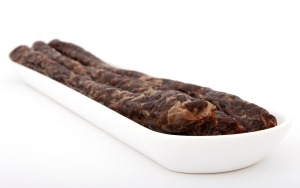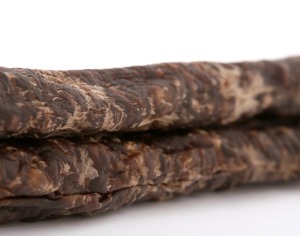
My most recent articles here have focused on a different type of subject matter than that which I normally write about. Change is refreshing. In recent weeks, I’ve had a lot of enjoyment going through the primary Latin works on agriculture and farming: these are Columella’s Res rustica, Cato’s De agricultura, and Varro’s De re rustica.
I had not imagined that I would like reading about this sort of thing, but it’s been a very eye-opening experience. Organic farming is an interesting subject. Judging by the responses to these articles, there are other who feel the same way.
Why? For one thing, we have begun to appreciate just how important it is for our food and drink to come from good origins. If we want to think and act in healthy ways, we must ensure that we are literally composed of good ingredients.
We moderns pump our meats with hormones and antibiotics, and drench our fruits and vegetables with chemicals. Is this a net good? There are trade-offs in life with everything, and the achievements of modern science should not be minimized. The modern food distribution system, with its conveniences and modest prices, is something that our remote ancestors could only have dreamed of.
At the same time, it is a mistake to think that we have not paid a price for all this. In Roman times and for many centuries afterwards, animal husbandry and the cultivation of produce was done “naturally” using human and animal labor. The Romans did not have to try to be “organic” farmers; they just were. Reading the food preparation recipes in the three authors named above (Columella, Cato, and Varro) in the original language made me imagine just how good foods must have tasted in those days.
Everything was raised and produced naturally. We have paid a price for our modern food system. On balance, it was probably worth it, but I know that I’m going to make more of an effort to cut out of my diet any foods that are too tainted with chemicals, hormones, and antibiotics.
I will describe here Columella’s preparation of salt pork. This preparation caught my eye, since salt pork plays a major role in an important dish that I grew up with: New England cod and clam chowders. Salt pork has many other uses, of course. It can be found in a number of Spanish and Portuguese dishes, and figures in the cuisines of other nations as well.
We will now find out how the Romans prepared it. My source here is Columella (XII.55).
Columella’s Preparation of Salt Pork
1. Columella begins by warning us of the necessity of removing all moisture from the meat during the treatment process. A good way to begin, then, is to prevent the pigs from drinking the day before they are to be slaughtered. This rule applies to all animals, and especially to the pig. (Omne pecus et praecipue suem pridie quam occidatur, potione prohiberi oportet, quo sit caro siccior).
2. The pig should be dispatched quickly and humanely. Then the carcass should be boned (bene exossato). The boning (i.e., removing the bones) makes the flesh preserve better (magis durabilem salsuram facit).
3. The flesh should then be thoroughly salted with rough, coarse salt that has been “toasted” or smoked (cocto sale). The salt should be liberally stuffed into the cavities where there still may be bones remaining.
4. The carcass (presumably cut in half here) should be stretched out on wooded planks. Covering them with another board, place heavy weights on top of this. This will act to press out any remaining blood and moisture from the flesh. Let this sit for three days.

5. After the third day, you should change the salt by rubbing off the old salt and rubbing on new handfuls of salt. The goal is to replace the old salt with fresh salt, so that the pork continues the drying process.
6. If the weather is mild and not wet, you can leave the carcass to cure in this way for nine days. If the weather is wet or rainy, you should let it cure for about ten days.
7. Take the pork to a fresh water source like a pond or river and wash out the salt as thoroughly as possible.
8. The carcass should then be hung up in a larder (in carnario), where it can receive a small amount of smoke. Besides adding flavor, the smoke will also serve to dry up any remaining moisture (In carnario suspendi, quo modicus fumus perveniat qui, siquid humoris adhuc continetur, siccare eum possit).
9. Columella advises us to carry out the salting process at a time when “the moon is waning” (luna descrescente), especially during the middle of winter, especially February. We note this advice with an amused smile, and can safely say that the phases of the moon have no relation to one’s success in salting pork.
Read More: Ancient Methods Of Preserving Olives

You must be logged in to post a comment.